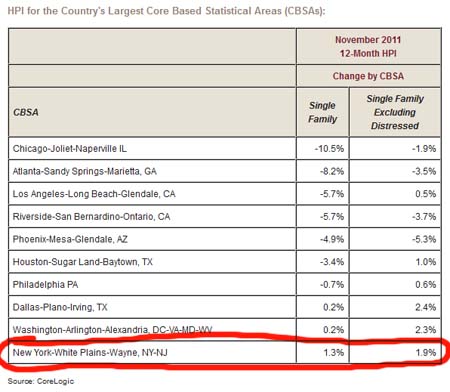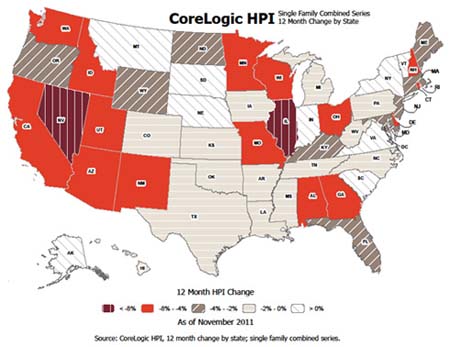From Bloomberg:
Bank Foreclosure Deal Reviewed by States as Delaware Drops Out
State attorneys general reviewed a proposed settlement with banks over foreclosure and mortgage- servicing practices that negotiators are pressing to complete as Delaware said it would reject a deal said to total $25 billion.
Representatives of Democratic attorney general offices met at a Chicago hotel yesterday to discuss the negotiated terms and ask questions, said Iowa Attorney General Tom Miller. Miller, who is helping to lead talks, said an agreement with the banks is getting closer.
“There are still issues to be worked out,” Miller said in an interview. “This is one step along the way, and it was a very productive day.”
State and federal officials have been negotiating a settlement with the five largest mortgage servicers — Bank of America Corp., JPMorgan Chase & Co., Citigroup Inc. (C), Wells Fargo & Co. (WFC) and Ally Financial Inc (ALLY). Talks were triggered by disclosures that the companies were using faulty documents in seizing homes.
The $25 billion deal would fund loan principal writedowns for homeowners and provide refinancings, a person familiar with the matter said before yesterday’s meeting. The proposal also sets requirements for how the banks conduct home foreclosures. The settlement would drop to $19 billion if California Attorney General Kamala Harris decides not to sign on, the person said.
…
Delaware Attorney General Beau Biden won’t sign on to the proposed agreement as drafted, Delaware Deputy Attorney General Ian McConnel said in a phone interview. He declined to comment on the reason for Biden’s decision.Biden has been among a group of attorneys general, including New York’s Eric Schneiderman and Harris in California, who have said any settlement shouldn’t protect banks from claims that haven’t been fully investigated, such as claims stemming from the packaging of mortgages into securities sold to investors.
From the NYT:
Political Push Moves a Deal on Mortgages Inches Closer
About one million homeowners facing foreclosure could have their mortgage burden cut by about $20,000 each as part of a long-awaited deal taking shape among state attorneys general, federal officials and the nation’s largest mortgage servicers.
But a final agreement remained out of reach Monday despite political pressure from the White House, which had been trying to have a deal in hand that President Obama could highlight in his State of the Union address Tuesday night.
…
The agreement could be worth about $25 billion, state and federal officials with knowledge of the negotiations said, with up to $17 billion of that used to reduce principal for homeowners facing foreclosure. Another portion would be set aside for homeowners who have been the victim of improper foreclosure practices, with about 750,000 families receiving about $1,800 each. But bank officials said Monday that the total amount of principal reduction and reimbursement would depend on how many states eventually sign on.


